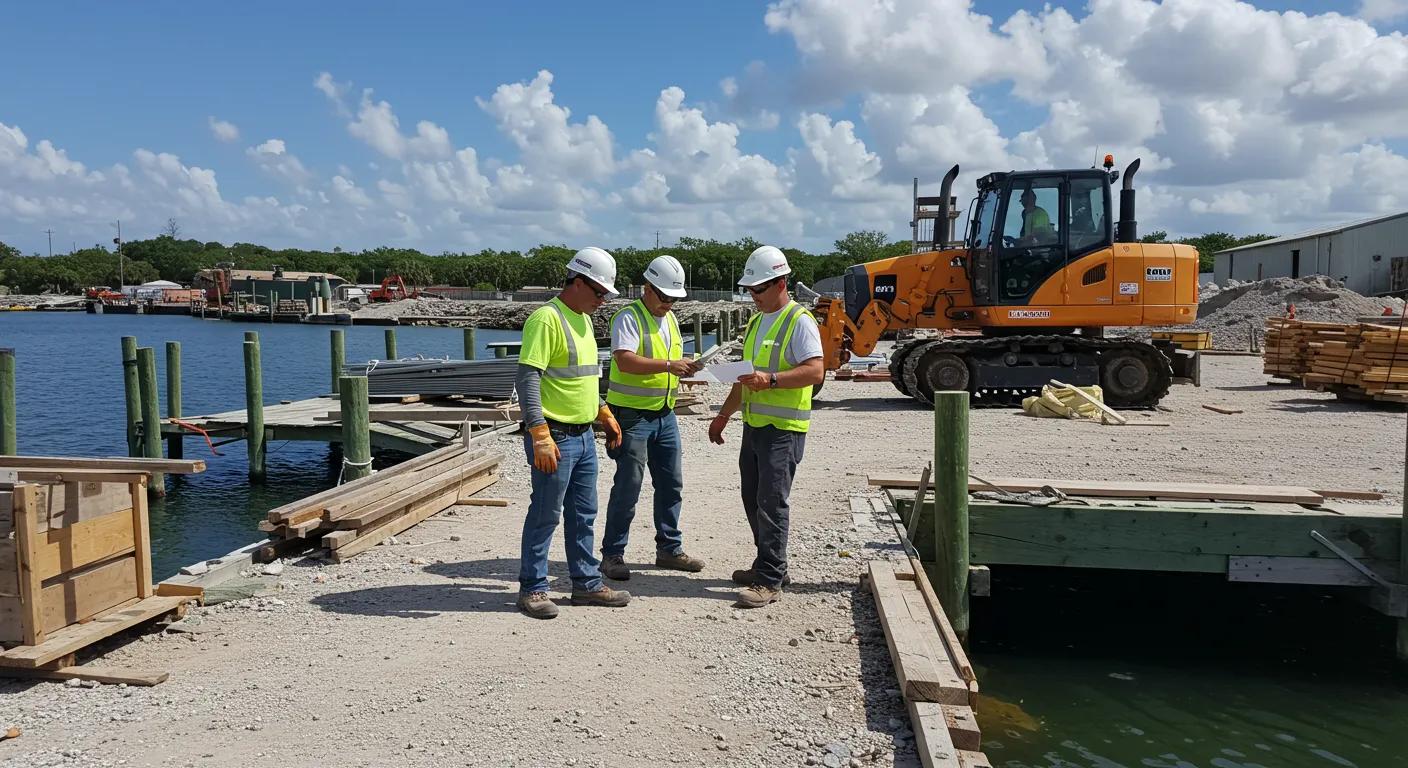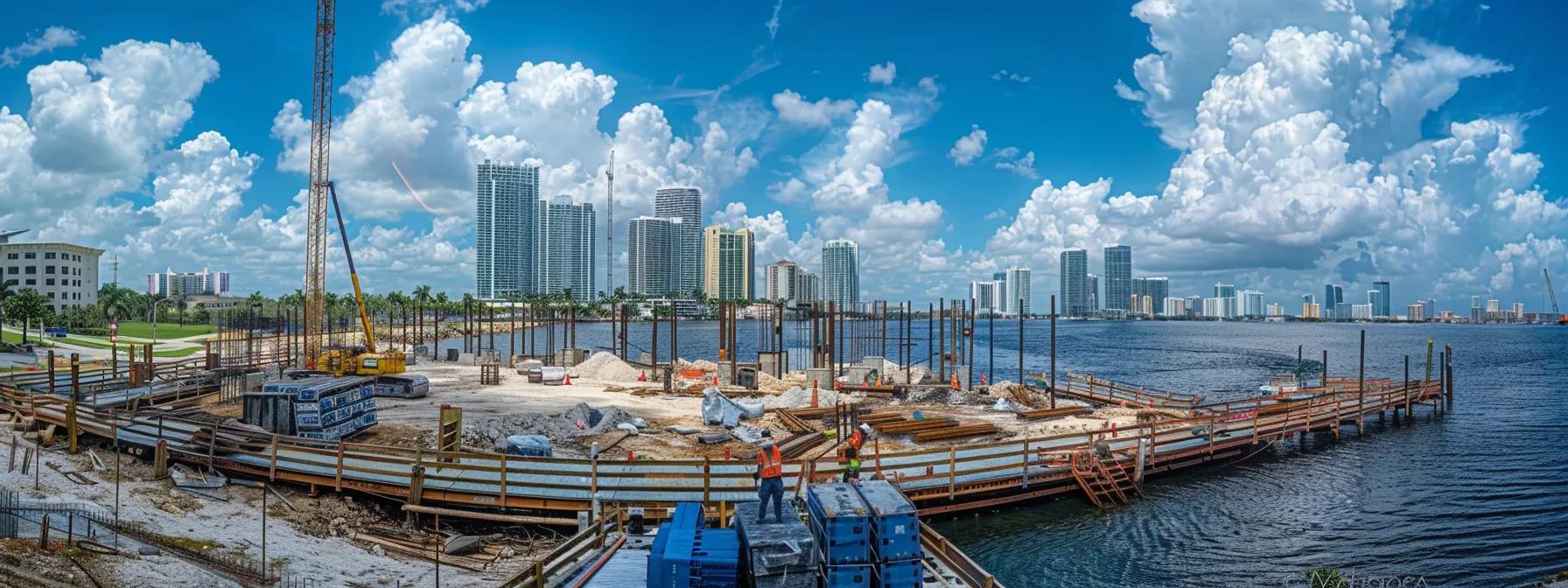State Dock Laws vs Federal Regulations: What Matters?
Welcome to a comprehensive guide designed to help you navigate the complex world of dockconstruction regulations. In the United States, if you are a homeowner planning to build or modify a dock on your waterfront, you need to understand how the dual authority of state and federal laws affects your project. This article explains the overlapping jurisdictions governing dockconstruction, provides clear answers to common legal questions, and outlines the steps needed for compliance. We discuss federal agency roles, state law differences, and the interaction with local rules. Whether your concerns involve water quality, shoreline protection, navigation, or maritime transport, this guide offers actionable legal insights to build and maintain your dock in compliance with construction and safety standards.
As we break down the dual authority framework and key regulations, you will learn how federal and state mandates influence your responsibilities and rights as a property owner.
Understanding the Dual Authority in Dock Construction Oversight
Understanding dockconstruction oversight in the United States requires recognizing the dual authority of federal and state governments. This section briefly explains how overlapping jurisdictions coexist and what regulations affect your waterfront construction project.
Defining Federal Jurisdiction Over Navigable Waters
Federal jurisdiction over navigable waters is grounded in longstanding laws and treaties. Agencies like the United States Coast Guard and the Army Corps of Engineers regulate navigation, water quality, and safety under constitutional provisions such as the Commerce Clause. Laws like the Rivers and Harbors Act require permits for any dock extending into federally controlled waters. These rules protect public interest, ensure maritime transport safety, and balance private property rights with national infrastructural needs.
Identifying State Powers Concerning Shoreline Structures
States regulate docks on non-navigable waters or areas governed by riparian rights. State agencies set design standards, enforce building codes, and impose zoning and environmental guidelines to protect local ecosystems and property values. Such regulations ensure that dock installations do not interfere with local land use, cultural heritage, or coastal erosion controls. Homeowners must often secure permits that satisfy both state and federal requirements, reflecting a layered legal framework.
How Local Ordinances Interface With State and Federal Dock Rules
Local governments can add extra conditions through setback requirements, design aesthetics, and limitations on dock numbers. While federal and state laws provide broad safety and environmental guidelines, municipalities often enforce policies that reflect community standards and planning needs. Noncompliance with local ordinances may lead to fines or the forced removal of structures, so researching local regulations during planning is vital.
The Primary Federal Agencies Governing Dock Building
Key federal agencies overseeing dockconstruction include the U.S. Coast Guard, which enforces navigation safety, and the Army Corps of Engineers, which issues permits and monitors waterway changes. The Environmental Protection Agency (EPA) also participates to protect water quality under the Clean Water Act. Together, these agencies ensure that dock projects meet strict federal standards while balancing economic, recreational, and ecological interests.
Key State-Level Bodies Involved in Dock Permitting
At the state level, agencies such as Departments of Natural Resources or Environmental Protection manage permitting for waterfront projects. Some states also have coastal commissions and health and safety boards that review dock designs and environmental impact assessments. Homeowners must often provide detailed plans and documentation to prove adherence to both local environmental and structural safety standards.
Core Federal Regulations Impacting Your Dock Project

Federal regulations establish a baseline framework for dockconstruction across the country, complementing more detailed state-specific rules. This section summarizes key federal laws and their impact on dock design, permitting, and compliance.
The Rivers and Harbors Act and Its Relevance to Docks
The Rivers and Harbors Act, enacted in the 1890s, remains central to regulating waterways. It prohibits unauthorized obstructions that might impede water flow or marine navigation. For any dock built on navigable waters, compliance with this Act—typically through obtaining a permit from the Army Corps of Engineers—is essential to ensure safe maritime transport and preserve surrounding ecosystems.
Clean Water Act Provisions for Dock Installations
The Clean Water Act aims to prevent pollution and maintain the chemical, physical, and biological integrity of waterways. In dockconstruction, the Act requires that projects do not discharge harmful pollutants and include measures to prevent erosion and sedimentation. Contractors and homeowners must implement adequate sediment and erosion control measures to maintain long-term water quality for both public enjoyment and ecological health.
Endangered Species Act Considerations for Waterfront Construction
The Endangered Species Act ensures that dockconstruction does not adversely affect the survival of endangered species. If your property is home to protected species, ecological assessments must be conducted and designs may need modification to avoid habitat disruption. Compliance not only helps avoid legal sanctions but also promotes biodiversity and ecological balance, often requiring coordination with state wildlife agencies and the U.S. Fish and Wildlife Service.
National Environmental Policy Act Requirements for Major Dock Projects
NEPA requires federal agencies to evaluate environmental impacts and engage in public commentary before approving major projects. For dock projects with significant federal involvement, a detailed Environmental Impact Statement (EIS) might be necessary. This process helps homeowners understand and mitigate potential environmental effects while balancing development with conservation.
How Federal Rules Address Dock Safety and Accessibility
Federal guidelines also establish safety and accessibility standards for docks. These include structural integrity requirements and, when applicable, features prescribed under the Americans with Disabilities Act (ADA). Regulations from the U.S. Coast Guard and Army Corps of Engineers ensure that docks have proper load-bearing capacity, safe access, and reduced slip hazards, thus minimizing accident risks and potential liabilities.
A Closer Look at State Dock Construction Laws and Variances
State-level dockconstruction laws add local detail to the federal framework, reflecting regional environmental, cultural, and practical considerations.
Common Elements Found in State-Specific Dock Legislation
Typical state laws cover essential aspects such as the choice of durable, corrosion-resistant construction materials, detailed design standards, and extensive permit application requirements. States also prioritize protecting riparian rights to ensure dockconstruction does not unduly affect neighboring properties. These requirements foster transparency and accountability and set standards that safeguard both ecosystems and community interests.
How State Dock Laws Address Environmental Protection
State regulations often include stringent environmental assessments and robust protection measures for aquatic habitats and shoreline integrity. In areas with sensitive ecosystems, states may mandate enhanced filtration systems, advanced erosion controls, and restrictions on dock size and placement. Such proactive standards protect natural resources and shield property owners from potential legal disputes or costly remediation later.
Material and Design Stipulations Within State Dock Construction Codes
State codes sometimes exceed federal minimum requirements by specifying sustainable and safe materials—such as pressure-treated wood or composite materials—and clear design parameters including weight limits and accessibility features. These stipulations help ensure that docks are durable, minimize potential hazards, and remain compliant with both safety and environmental guidelines over time.
Understanding Riparian Rights Under State Property Laws
Riparian rights grant dock-adjacent property owners reasonable access to their water bodies. Each state’s legal framework outlines how docks can be built without infringing on neighbors’ rights. Homeowners must understand these rights to avoid disputes and potential litigation, often benefitting from consultations with legal experts familiar with local doctrines.
Comparing Dock Permitting Timelines Across Different States
Permitting processes vary significantly by state. Coastal states, for instance, may require lengthy ecological reviews due to high environmental sensitivity, while inland states might offer a more streamlined process. Homeowners should plan their projects accordingly by consulting local permitting offices to accurately schedule their construction timelines.
Determining Which Rules Apply When State and Federal Laws Conflict

Conflicts between state and federal regulations in dockconstruction can be complex. This section outlines the key legal principles used to determine which rules take precedence.
The Supremacy Clause and Federal Preemption in Dock Regulations
The Supremacy Clause of the U.S. Constitution means that when state laws conflict with federal laws—such as those mandated in the Rivers and Harbors or Clean Water Acts—federal rules generally prevail. However, state regulations can still apply if they complement rather than contradict federal standards, so careful analysis is required.
Identifying Stricter Provisions Between State and Federal Mandates
In practice, if state regulations exceed federal requirements, the stricter rules must be followed. This ensures local safety and environmental standards are maintained even if federal rules set only a baseline. Homeowners should review both sets of rules and consult legal professionals to navigate any overlaps effectively.
Seeking Clarity on Jurisdictional Boundaries for Your Property
Understanding where federal authority ends and state authority begins is crucial, particularly for projects spanning multiple regulatory zones. Often, joint permits are needed, and consulting both state and federal permitting offices can help clarify jurisdictional boundaries and ensure full compliance.
When State Law Offers Greater Protection Than Federal Standards
Some state laws intentionally offer more robust protection than federal standards, focusing on enhanced water quality, habitat conservation, or safety measures. Homeowners must adhere to these higher state standards even when they exceed federal mandates, as this benefits both local conservation and community safety.
Consulting Legal Professionals for Complex Regulatory Overlaps
Because of the layered complexities in dockconstruction laws, seeking advice from legal professionals specializing in maritime, environmental, and propertylaw is often the best course of action. Their expertise can help streamline permitting and ensure alignment with both federal and state requirements.
Successfully Working Through State Dock Construction Laws and Federal Mandates
Effective dockconstruction requires strategic planning to obtain permits and comply with all regulatory layers. This section outlines streamlined steps to simplify the process and avoid common pitfalls.
Initiating the Permit Application Process for Dock Building
Begin by assembling necessary documents—detailed site plans, environmental assessments, and proof of property ownership. Early contact with state and federal agencies can highlight requirements and prevent conflicts later. Using local checklists helps ensure no vital element is overlooked.
Essential Documentation for Federal and State Dock Permits
A successful permit application typically includes a comprehensive construction plan, environmental studies, proof of ownership, risk management strategies, and financial assurances. Preparing these documents carefully increases the likelihood of swift, smooth approvals.
Addressing Environmental Impact Assessments for Dock Projects
Obtaining an Environmental Impact Assessment (EIA) is crucial to evaluate how your dock may affect local water quality and wildlife habitats. Working with qualified consultants ensures the report addresses concerns and outlines mitigation measures to minimize adverse effects.
Working With Marine Contractors Familiar With Dual Regulations
Selecting experienced marine contractors who understand both federal and state requirements is key to a compliant dock project. These professionals bring expertise in design and construction validation, helping troubleshoot issues before they escalate and saving time and cost.
Steps for Ensuring Long-Term Compliance With All Dock Laws
Once constructed, docks require ongoing maintenance and periodic inspections to remain safe and compliant. Keeping thorough records of maintenance and promptly addressing repair needs are essential practices to protect against legal or safety issues over time.
Common Pitfalls and Solutions in Dock Regulatory Compliance

Even a minor oversight in regulatory compliance can lead to significant legal or financial consequences. Below are common pitfalls and practical solutions to address them.
Addressing Unpermitted Dock Structures and Legal Consequences
Building a dock without proper permits can result in fines, legal action, or forced removal. Ensure that all permits are secured before construction begins. If a dock is already unpermitted, consult legal experts immediately to determine if retroactive permits or modifications can resolve the issue.
Modifying Existing Docks Under Current State and Federal Rules
Older docks may need updates to meet current codes. Retrofitting usually involves inspections, design updates, and supplemental permits. Working with experienced contractors can help phase these modifications to manage costs and minimize disruptions.
Appealing Permit Denials or Unfavorable Conditions
If your permit application is denied or restricted by unfavorable conditions, review the decision carefully. Prepare an appeal that addresses each concern with additional documentation or design modifications. Legal professionals specializing in maritime or environmental law can improve your chances of success.
The Significance of Regular Dock Maintenance for Legal Standing
Regular maintenance is critical for safety, longevity, and legal compliance. Periodic inspections, repair documentation, and proactive upgrades ensure that your dock continues to meet all current safety and regulatory standards, reducing risk and potential liabilities.
Staying Updated on Changes to Dock Laws and Federal Regulations
Dockconstruction standards are subject to change over time. Homeowners should subscribe to updates from state agencies, join local community meetings, and consult with legal professionals to remain informed about new or revised regulations that might affect their projects.
Frequently Asked Questions
Q: What is the primary difference between federal and state regulations in dockconstruction? A: Federal regulations focus on navigation, water quality, and uniform standards across navigable waters, while state regulations address local shoreline protection, environmental impacts, and property rights. Both sets must be followed, with state rules often providing stricter guidelines.
Q: How do I know if my dockproject falls under federal jurisdiction? A: Projects affecting navigable waters or interstate commerce, such as docks extending into federally regulated areas, fall under federal jurisdiction and typically require permits from agencies like the Army Corps of Engineers or the Coast Guard.
Q: What steps should I take if my dockconstructionpermit is denied? A: Review the denial for specific deficiencies, consult with legal experts in maritime or environmental law, and consider filing an appeal with additional supporting documentation addressing all concerns.
Q: Can existing docks be modified to meet current state and federal regulations? A: Yes. Retrofitting older docks to meet updated codes involves inspections, design modifications, and supplementary permits. This process ensures that the dock remains safe and compliant.
Q: What role does an Environmental Impact Assessment (EIA) play in the permitting process for dockconstruction? A: An EIA assesses potential impacts on water quality, wildlife habitats, and local ecosystems. It is crucial for obtaining permits by demonstrating that any negative environmental effects will be effectively mitigated.
Q: How often should dockmaintenance be performed to ensure ongoing compliance? A: Regular maintenance should occur at least annually, with more frequent inspections in harsh or rapidly changing environments. Detailed records of maintenance help uphold compliance and safety standards.
Q: What resources are available to help homeowners stay updated on changes to dockregulations? A: Updates can be obtained from state Departments of Natural Resources, Environmental Protection Agencies, and federal agencies such as the Army Corps of Engineers, as well as through local bulletins, industry associations, and legal consultations.
Final Thoughts
In summary, understanding and navigating the dual authority of state and federal dockconstruction regulations is essential for a safe, compliant, and environmentally sound project. Clear knowledge of jurisdictional boundaries, environmental and safety standards, and strategic permit processes will help streamline construction while avoiding common pitfalls. Keeping current with regulatory updates and performing regular maintenance protects both your investment and the surrounding ecosystem, enabling you to confidently build a dock that stands the test of time.




